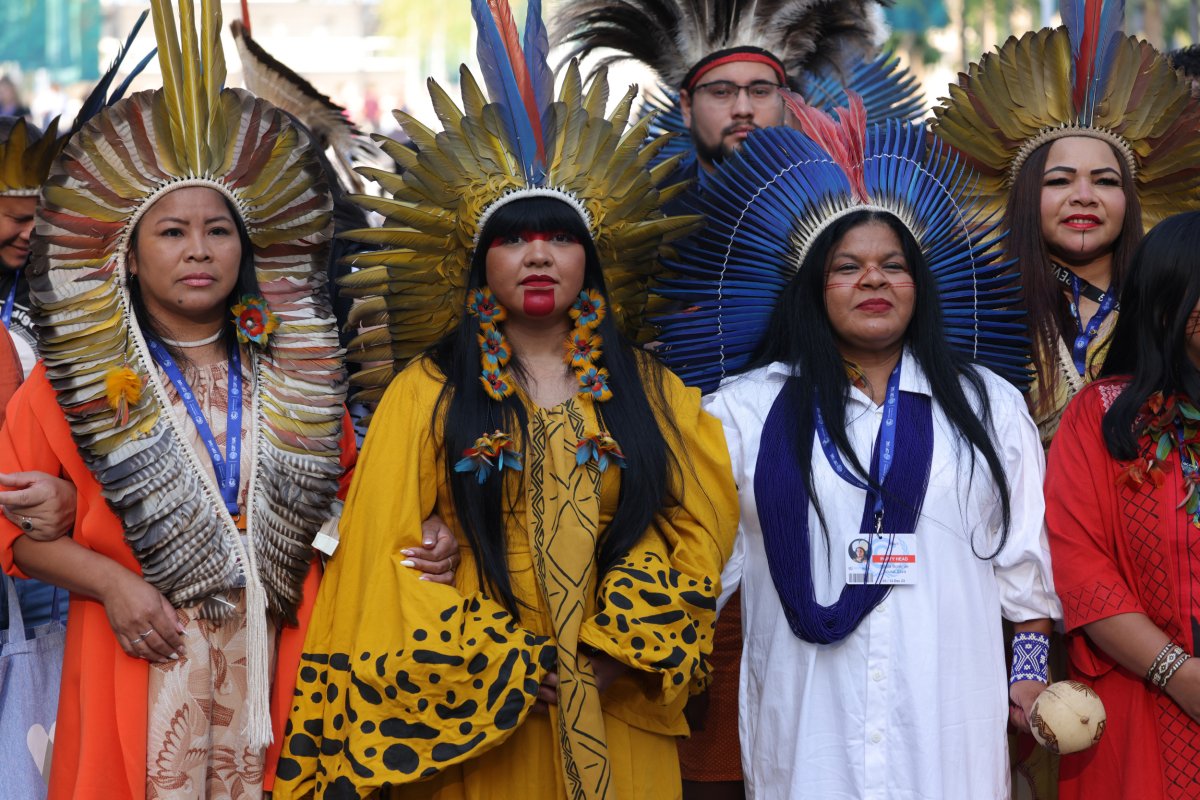Brazil underwent a significant political shift in January 2023, with the return of Luiz Inácio Lula da Silva, commonly known as Lula, to the presidency. Lula, who previously served as the country’s leader from 2003-2010, secured a third term in office. This return to power marked a moment of both hope and skepticism, particularly among Brazil’s Indigenous and environmental activists.
Lula’s presidency was characterized by a mix of progressive policies and several controversial decisions. While his administration implemented social programs that lifted millions out of poverty, such as the Bolsa Família, where eligible families receive monthly cash payments, contingent upon meeting certain conditions related to education and health care, it also faced criticism for its environmental policies.
Lula’s successor, Dilma Rousseff, continued and deepened economical projects that threatened the environment, notably the construction of the Belo Monte hydroelectric plant. This project, deemed illegal by the Inter-American Commission on Human Rights (IACHR), highlighted the tension between economic development and environmental conservation.
Rousseff’s government marked a continuity of policies that favored economic interests over environmental and Indigenous rights. This pattern of mixed actions and rhetoric contributed to a sense of caution among activists, who hoped for meaningful change but remained wary of past disappointments.
Despite all concerns, Lula’s return to office generated optimism among activists, fueled by promises of prioritizing Indigenous and environmental issues. His decision to appoint environmentalist Marina Silva as minister of the environment and climate change upon assuming office seemed to signal a commitment to these causes. However, Marina’s previous resignation from a similar position due to disagreements over the very environmental policies she was appointed to handle raised doubts about the administration’s sincerity.
Despite some advancements in Indigenous rights during Lula’s previous terms, such as the demarcation of several Indigenous lands (even though the total area of land demarcated by Lula was considerably smaller than that of previous presidents), there were also instances of neglect and conflict. Both Lula and Rousseff’s governments faced challenges in balancing competing interests, leading to a mixed legacy on Indigenous and environmental issues.
The election of far-right candidate Jair Bolsonaro in 2018 represented a significant departure from previous administrations’ approaches to Indigenous and environmental issues. Not a single policy can be mentioned that considered environmental or Indigenous interests.
Bolsonaro’s presidency ushered in a wave of policies at the expense of environmental protection and Indigenous rights. His administration dismantled environmental regulations, encouraged mining and deforestation in Indigenous territories, and marginalized Indigenous voices in decision-making processes. Bolsonaro was even investigated for promoting genocide against the Yanomami people.
EVARISTO SA/AFP via Getty Images
His tenure was a period of unprecedented destruction of Brazil’s ecosystem and attacks on Indigenous communities. The government’s policies not only undermined Indigenous rights but also endangered their lives and livelihoods. Illegal mining activities on Indigenous lands led to violence, environmental degradation, and the deaths of Indigenous people due to malnutrition and easily treatable diseases, particularly among the Yanomami.
The contrast between Bolsonaro’s presidency and Lula’s return to power underscored the stakes.
While Bolsonaro represented a threat to Indigenous rights, Lula’s re-election offered a glimmer of hope for change. The establishment of a new ministry, the ministry of Indigenous Peoples, under Lula’s third term was seen as a possible step toward addressing the concerns of the Indigenous.

Sean Gallup/Getty Images
Sônia Guajajara, an Indigenous leader, was appointed to head the ministry, whose creation was hailed by Indigenous activists. They saw it as a long-overdue recognition of their struggles and aspirations—a symbolic and tangible commitment to Indigenous rights and environmental conservation. However, its effectiveness ultimately depends on the government’s willingness to allocate resources, empower Indigenous communities, and address underlying issues such as land conflicts and environmental degradation.
One of the immediate challenges facing the new ministry was addressing the ongoing threats faced by the Yanomami in northern Brazil, particularly concerning illegal mining activities on their lands, which were promoted by Bolsonaro. The government’s response to these threats would be a litmus test of its commitment to Indigenous rights and environmental protection.
One year into Lula’s third term, the government has little to show when it comes to real action and accomplishments. While there were some positive developments, such as the establishment of the ministry itself, and increased international attention to environmental issues, little has changed on the ground.
Reports of violence against Indigenous communities, illegal mining activities, and land conflicts continued to make headlines, underscoring the urgent need for action and the inherent issues surrounding a government that was already under suspicion. The Yanomami people still face the same challenges of one year ago—malnutrition, violence, lack of medicine and drinking water, and even death.
Lula’s government promised to prioritize Indigenous rights, protect the environment, and uphold its commitments to international treaties and agreements, but has so far failed to do so. Despite being a member of Lula’s cabinet, Minister Guajajara has expressed frustration for the lack of funding and commitment by the government with her ministry.
As Brazil grapples with pressing social, economic, and environmental challenges, the fate of its Indigenous Peoples and natural ecosystems hang in the balance, awaiting decisive leadership and bold initiatives. But little hope remains for Lula’s third term. Once again, Brazil’s Indigenous have been used as a tool for propaganda and empty campaign promises with a lack of any real change.
After his re-election, Lula’s gestures toward this population appear to have been merely cosmetic, a way to appease criticism, while in the real world the Indigenous continue to be persecuted and killed on their native lands.
Raphael Tsavkko Garcia is a Brazilian journalist based in Belgium. He holds a PhD in human rights from the University of Deusto (Spain).
The views expressed in this article are the writer’s own.
Uncommon Knowledge
Newsweek is committed to challenging conventional wisdom and finding connections in the search for common ground.
Newsweek is committed to challenging conventional wisdom and finding connections in the search for common ground.


